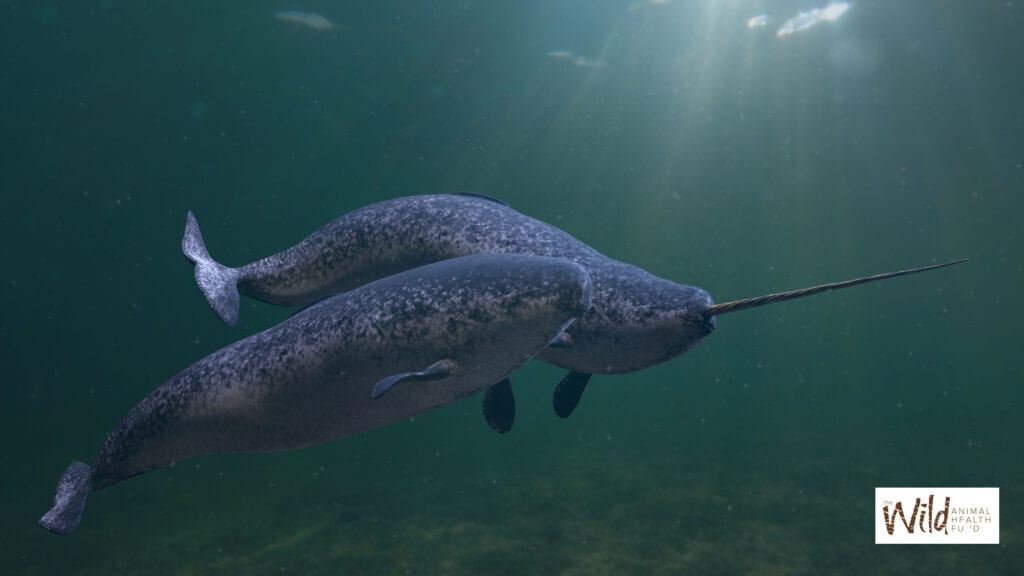Narwhals, the unicorns of the sea

Did you know narwhals, the unicorns of the sea, are actually a species of whale related to the Orca and Beluga that call the Arctic Circle home?
The unique and singular tusk that male narwhals grow, that gives them the nickname ‘Unicorns of the Sea’, is actually a tooth that can grow up to 10 feet long through its upper lip!
An adult can grow as long as 20 feet and weigh up to a ton.
Female narwhals will give birth to a 5 feet long calf only once every three years. Their average lifespan is 30-40 years with some living as long as 50 years.
Interestingly, as narwhals age, they change colors. As a baby, are a grey-blue speckled. When they become a teenager, they turn blue-black. Adult narwhals are a speckled grey and the older, senior narwhal can be nearly white.
With the oceans being so vast, it is unsure of exactly how many narwhals are alive but the IUCN red list has an estimation of 123,000 that exist today.
Helping the narwhals
Concerned about the effects of environmental changes and the welfare of these amazing animals, Wild Animal Health Fund has partnered with the University of Calgary. The research study is to learn more about their population health and the impact of the fast changing climate. The information gained could serve as part of a health index for the unicorns of the sea.
Researchers are able to use tissue samples collected from 230 narwhals between 1976 and 2018. Their objective is to see if changes in the skin microbiome had occurred in those 40 years.
Although researchers are still looking at all the samples, it has been noted that the relatively new technique of using mircobiomes is promising. They are able to assess changes in the health of narwhals. This technique could be used on other equally important, free ranging species that may be affected by fast environmental changes.
